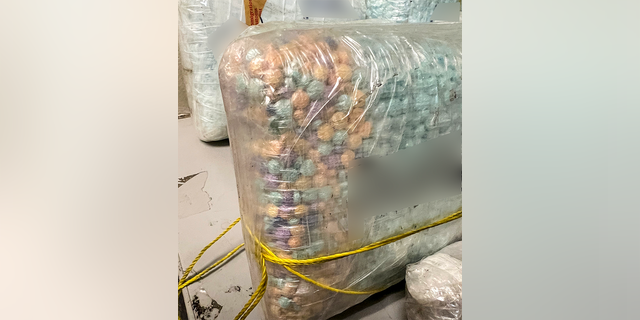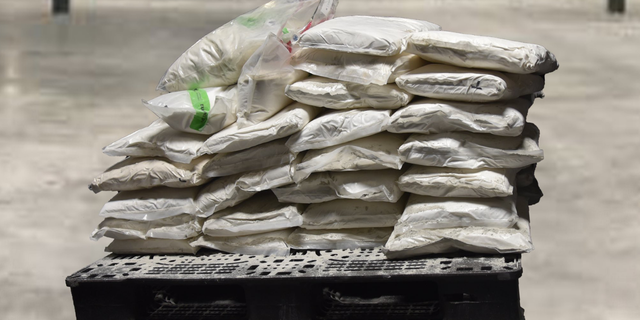Fentanyl and a stronger form of meth now driving American homeless crisis
A stronger and more dangerous version of methamphetamine and fentanyl are helping drive America’s homeless crisis, with users quickly slipping into debilitating addiction and mental illness that makes it impossible for them to function in society.
“These two drugs come in such enormous quantities and have such staggering potency that they do the job far more masterfully than drugs have done it before,” author Sam Quinones, who detailed the opioid crisis in books such as Dreamland and The Least of Us, said in an interview with the Intelligencer last week. “So you have methamphetamine that is driving people to homelessness, and becoming incoherent and irrational and delusional and paranoid.”
Quinones’ comments come as America’s homeless population has seen a resurgence in recent years. According to a 2022 analysis by the National Alliance to End Homelessness, the country’s homeless population fell from a high of over 647,000 in 2007 to nearly 550,000 in 2016. Now the homeless population has seen a resurgence in the years since, rising again to over 580,000 by 2020, the most recent year the organization was able to compile complete data.
There are indications the problem has continued to deepen, with shelters across the U.S. reporting a tripling of their populations over the last year while reports of large homeless encampments springing up in major cities from coast-to-coast have dominated headlines.
LAW ENFORCEMENT AGENCIES ACROSS THE COUNTRY MADE SEVERAL RECORD-SETTING FENTANYL BUSTS IN 2022
Blame for the renewed crisis has been pinned on many factors, with many Americans left behind by an economy attempting to recover from pandemic restrictions now facing the burden of soaring inflation.
But Quinones points to dangerous drugs as a major contributor to the issue, noting that new strains of meth have had a debilitating impact on people across the country, forcing them out onto the streets where they live a life focused on getting their next high.
“Both of those drugs, together and alone, make it so that people will literally refuse treatment, will literally refuse housing even when they’re living in tent encampments, even when they’re living in feces, in lethal temperatures, beaten, pimped out, because they do such a masterful job in potency and in supply of keeping, of thwarting that instinct to self-preservation,” the author said of fentanyl and meth.
The rise of fentanyl as the primary driver of the opioid crisis over the last two years has dominated news coverage in large part because of how dangerous the drug is, being potentially fatal in even small doses. According to the latest Centers for Disease Control and Prevention data, synthetic opioid such as fentanyl 82.3% of opioid-involved overdose deaths in 2020.
FLORIDA SHERIFF’S OFFICE MAKES RECORD FENTANYL BUST, ARRESTS 3 PEOPLE TRAFFICKING DRUGS SENT FROM MEXICO

Meanwhile, users of meth are more likely to have their health decay over time instead of dying of an accidental overdose, a problem which has not garnered as much attention. Nevertheless, the drug has a dangerous impact on people’s lives.
“It doesn’t kill people. It’s also like the pure raw face of addiction — people out of their minds wandering in the streets, screaming naked like some Allen Ginsberg poem,” Quinones said. “It’s something that people would prefer not to have to face, I think. It’s easier to send condolences to someone who’s dead than to deal with someone who is out in the streets, out of his mind.”
Making the problem worse is a new and more dangerous strain of meth that has spread across the country, creating increased rates of mental illness and homelessness in its wake.
According to a report last year in the Atlantic, meth that found its way into America’s streets was for decades primarily made using the “ephedrine method.” Ephedrine, a drug commonly found in decongestants such as Sudafed, was widely available and was the primary active ingredient found in meth.
ARIZONA POLICE SEIZE 395,000 FENTANYL PILLS DURING TRAFFIC STOP, SUSPECT ARRESTED

But by 2010, an international crackdown in the availability of the ingredient had contributed to a shift. Drugmakers looking to keep profits flowing turned to a liquid called phenyl-2-propanone, or P2P. P2P was easier for traffickers because its ingredients were commonly found in cheap, legal, chemicals.
The shift to the P2P method was not without pitfalls, as it would often result in producing either d-methamphetamine or l-methamphetamine. While d-methamphetamine is the type that produces the high drug users crave, l-methamphetamine will make the heart race but do little for the brain, making it undesirable for drug users.
Separating the two types of meth had typically only been without the grasp of expert, experienced chemist and not the typical drugmaker, but that has changed in recent years, with drug dealers across Mexico beginning to figure out how to cook up the more desirable meth which led to a shift towards the P2P method.
The growth of the new method has been a boom for dealers, who use the cheap and easily available ingredients to mass produce meth on a scale previously unseen. In less than a decade, the newer version moved north and spread to every region of the U.S., poisoning thousands of Americans with a drug that is more dangerous than they had previously used.

While more attention has been paid to the problem in recent years, there are few signs there will be progress towards solving it. Drug dealers have increased production of drugs such as meth and fentanyl, moving away from plant-based drugs that often depended on growing seasons and weather to produce. Instead, dealers can now mass produce the more potent and addictive drugs in any climate at any time of the year.
That reality may force more action from the federal government, Quinones argued, which has the power to dictate international diplomacy unlike city governments attempting to tackle their homeless problem.
“At no point in the history of the so-called drug war have we seen the kind of collaborative efforts that must take place, that can take place, between Mexico and the United States nationally,” Quinones said. “But I do believe that this now requires a collaborative relationship between the two countries, but one that does not tiptoe around the truth, which is that Mexico has a real problem with deep corruption in the criminal-justice system..”
Read the full article Here


